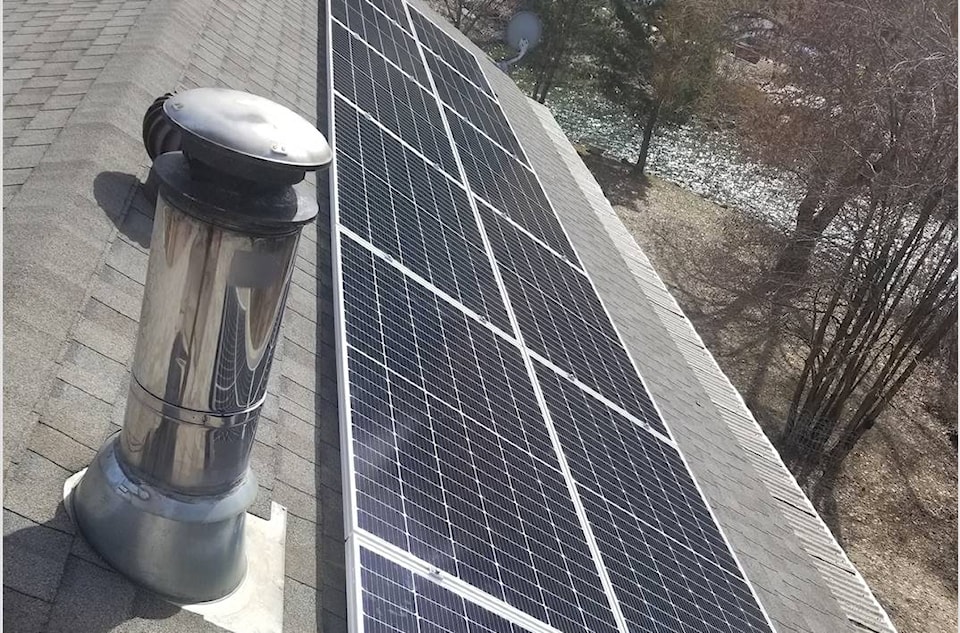Having gained an honours degree in physics with space science and technology, I know a bit about our solar system.
However, this month we took a giant leap of the environmental kind and boldly went were not many Princetonites have gone before. That was to install our own solar power system in our home here in town.
While not the first in the area to go solar, most if not all have been out of town and usually off grid.
The great people at Riverside Energy Systems out of Kamloops had us up and running within two days, and sorted out all our paperwork and dealt with FortisBC without a hitch.
We now have a 5.3kW system tied directly to the rest of the electrical grid.
This means that we do not have any batteries to store the excess energy that we produce. Instead, we in effect sell our excess energy back to FortisBC and get credits on our bill to pay for the energy we use when the sun is not out.
Why did we decide to go solar anyways? The primary reason for us was the environment. Although B.C. is great at producing clean energy through hydro dams, you can never have enough of a good thing. B.C. continues to grow and as it does, more energy will be needed, especially for things like electric cars or indoor marijuana production which is a heavy energy user.
The Site C hydro dam currently under construction is the last acceptable for development so B.C. needs to explore renewables other than hydro if it wants to continue to meet its long-term energy goals. Over the long term, solar and hydro power have about the same carbon footprint. One floods entire valleys and the other uses energy and chemicals for the manufacturing process. The advantage of rooftop installations is that you are not taking up any more real estate and you’re not flooding or taking up prime agricultural land. You’re just using space that is otherwise going unused.
The only real downside to solar at the moment is cost. You are essentially prepaying for 10-20 years worth of electricity. However, the cost is coming down all the time. While in the process between quoting and installing our own system, the company received new panels that produced the same energy but saved us about $2000, making our final invoice just under $12,000. This is still the main barrier for most people. With no incentives in B.C. for solar power systems from the provincial/federal governments or the power companies, the uptake is quite slow.
However, there are things local governments can do to help. I’ve recently written to our local council and asked them to look at revitalization tax exemptions for anyone installing solar power systems.
If taken up, this could offset some more of the cost and incentivize people to help the environment here in Princeton. And at the moment the town really does need to start picking up the baton and start helping the environment.
We have had a concerted effort in recent years to encourage more tourists to the town along with new businesses.
Also, with the more established industries like the mill and the mine, Princeton’s carbon footprint could be better.
Now is a great time for council to come up with plans to offset some of these impacts, to help the environment.
